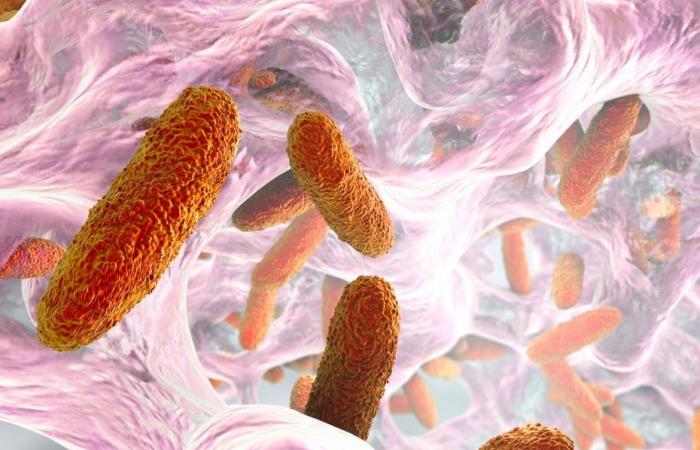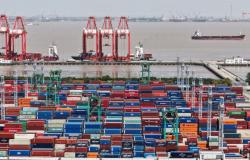A piece of mobile DNA which carries the genes of antibiotic resistance from one bacteria to the other, and which travels, sometimes on thousands of kilometers: this is the alarming observation of an Clermont-Ferrand researcher. We explain to you how it works.
Company
From daily life to major challenges, discover the subjects that make local society, such as justice, education, health and family.
France Télévisions uses your email address to send you the “Company” newsletter. You can unsubscribe at any time via the link at the bottom of this newsletter. Our Privacy Policy
What if the antibiotic genes could be transmitted from bacteria to bacteria, in particular via wastewater? In any case, this is what a study conducted by a researcher from Clermont-Ferrand suggests. Professor Didier Debroas heads the Clermont Auvergne, UCA university microorganism laboratory, UCA. For 2 years, he used public databases for computer analyzes. “JI am a researcher in microbial ecology And I work from massive sequencing data microbial DNA in different ecosystems. From this massive sequencing, we try to reconstruct microbial genomes, but also mobile genetic elements that are plasmids”.
These are these plasmids, circular DNA fragments, which would be the vectors of genes like that of antibiotic resistance: “We find what are called mobile genetic elements, and among them, we are interested in small DNA fragments which are plasmids. These are circular fragments. Compared to a bacteria, these mobile genetic elements are much smaller.” For a bacteria the genome is on average 4 megabasses, against around 50 kilobasses for a plasmid. Plasmids are called mobile genetic elements because they are able to move, ranging from bacteria to bacteria: “They will be able to pass from one bacteria to the other by what is called a conjugation phenomenon which is a kind of sexuality between bacteria. These small mobile elements give them new properties. Bacteria which are in nature can recover for example antibiotic resistance genes”explains Professor Debroas.
Bacteria will recover new properties within these plasmids, by making copies: “Some plasmids carry genes of resistance. When they are going to be transferred to a bacteria, for example pathogenic, which does not have this resistance to a precise antibiotic, the bacteria will recover this property of being resistant: it will, in a way, make a copy of the plasmid and use it as further in the environment where it is. This may be a gene of antibiotic resistance, a gene involved in the detoxification of heavy metals … bacteria acquires an advantage compared to other bacteria to survive in the environment ”says Didier Debroas.
Professor Debroas notably highlighted plasmids which are associated with Klebsiella pneumoniae, a bacteria which becomes very resistant in a hospital environment. “We have highlighted a type of plasmid that could go through different ecosystems and which could transform pathogenic bacteria. Klebsiella pneumoniae becomes more and more resistant and it is able to provoke different pathologies. It has virulence factors that it has acquired which make it expressed and causes pathologies. On a plasmid, we can have plus the bacteria, so the bacteria becomes Multi -reflecting, and in the hospital environment, it becomes difficult to fight against this type of bacteria.
But then, where do these plasmids carrying the antibiotic resistance gene come from? “At the hospital level, you find pathogenic bacteria, with resistances and that come from patients. All this goes in wastewater where the treatments are effective. Possibly, some are capable of resisting treatments and will then go into the river. These are not common events, it is rather rare, but the more resistance that happens, the more likely there is a chance”explains Professor Debroas.
The treatment plant is an important resistance tank. “We realize that the soil is not a very important tank, it is rather air, rivers, everything that circulates. It is like a treadmill on a global scale. Air is a potential vector of antibiotic resistance genes. It does not mean that when we breathe, we will contaminate, but it is a vehicle. The air and the river, the aquatic environment are very important vehicles of the circulation of these resistance”indicates Didier Debroas. Particle pollution can also be a factor: “A bacteria does not fly on its own. They tend to agglomerate on particles and the more particles in the air, as part of pollution, the more we increase the number of bacteria and therefore bacteria which have plasmids.”
To read also >> Antibiotic -resistant bacteria tracked down in the Auvergne clouds
And these bacteria sometimes travel very far, according to Professor Debroas: “We were able to demonstrate that a plasmid that was isolated in Asia was in contact with a pathogenic bacteria that is found in the United States. There is a very large global circulation and over long distances, a very large circulation of antibiotic resistance genes via plasmids, therefore potentially meeting a multi-resistant plasmid with a pathogenic bacteria.”
However, he reassures: “We do not know if these antibiotic resistance genes are functional or not, it is often a few mutations for the gene is no longer functional.” He underlines the nuance between a work of bioinformatics of data processing and what can be observed experimentally.








